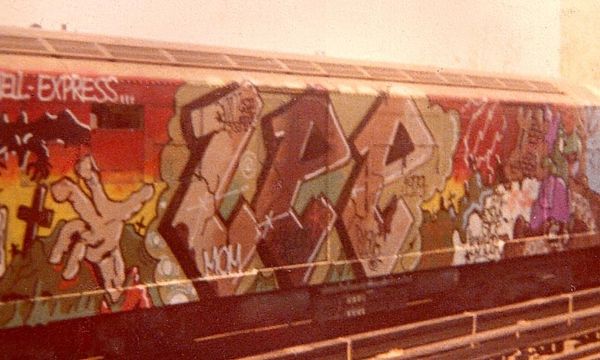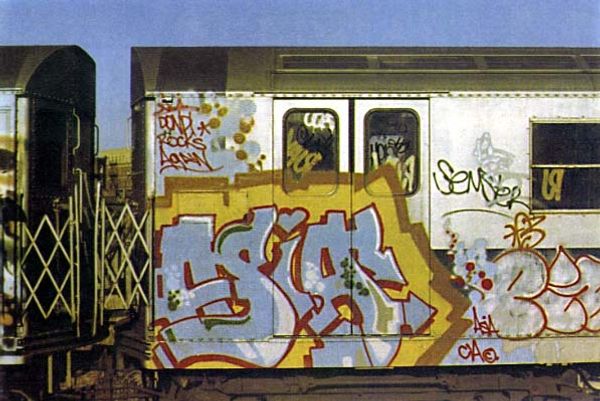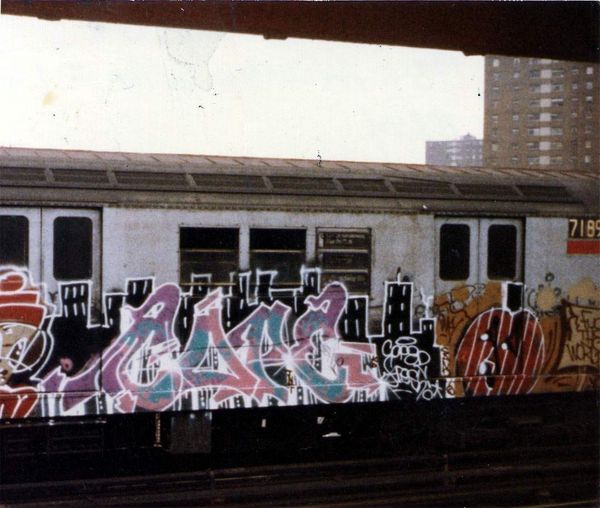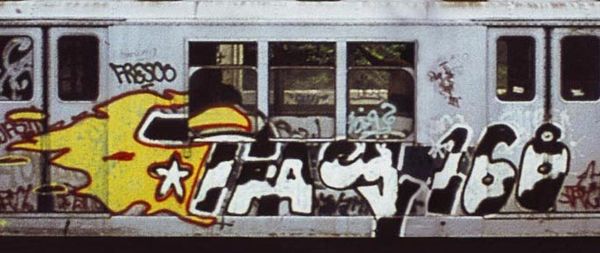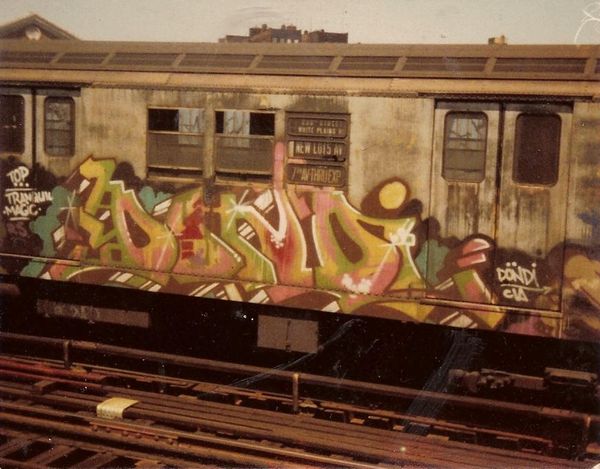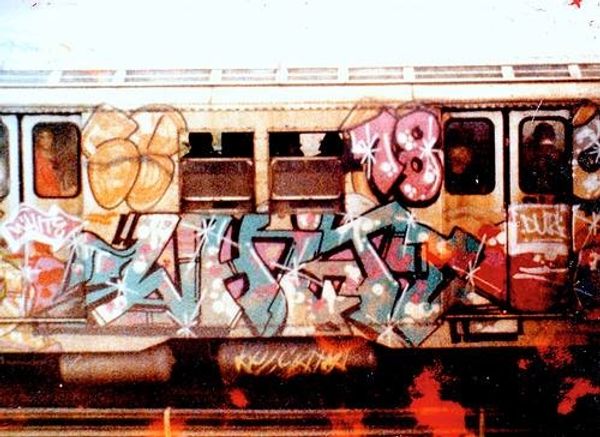
mixed-media, public-art, site-specific
#
action-painting
#
public art
#
abstract-expressionism
#
graffiti
#
mixed-media
#
graffiti art
#
street art
#
street-art
#
public-art
#
graffiti-art
#
urban art
#
site-specific
Copyright: Futura 2000,Fair Use
Editor: This piece by Futura 2000 is a fantastic example of mixed-media and site-specific work. Given the aesthetic, I'd say it’s from the 1980s, or potentially early 90s. It feels so raw and energetic! What’s your take? How do you interpret its placement and how the public might engage with it? Curator: The "rawness" you observe speaks volumes. Considering the sociopolitical climate of the late 20th century, graffiti art served as a powerful voice for marginalized communities. The urban landscape became a canvas for protest, a challenge to established norms. How does the idea of graffiti and public art as a form of protest resonate with you? Editor: That resonates strongly! It's like reclaiming space and making a statement when other avenues are closed off. The layering of tags and phrases almost feels like a conversation. Curator: Precisely. Think about who is given permission to create monuments and public art. Historically, these were powerful institutions that controlled public discourse. Artists such as Futura 2000 challenged those hierarchies. Considering its evolution into "urban art" today, how do you think its social and political function has changed? Editor: Hmmm... now it’s definitely more commodified, but that doesn't erase its history. There's still a rebellious spirit, especially when artists address issues like social justice. This makes me wonder how the art world's acceptance of street art changed how it is made, and how it’s viewed in society. Curator: The institutional embrace – galleries, museums, auction houses – undeniably alters its dynamics. It is crucial to recognize this tension; the street's energy versus the gallery's gaze. But thanks to artists like Futura 2000 we still see that energy! Editor: Absolutely, the roots are still there, and it's important to remember where the movement came from. Curator: Indeed. Considering art’s impact is shaped not just by the artists, but the ever-evolving social contexts that surround it.
Comments
No comments
Be the first to comment and join the conversation on the ultimate creative platform.



